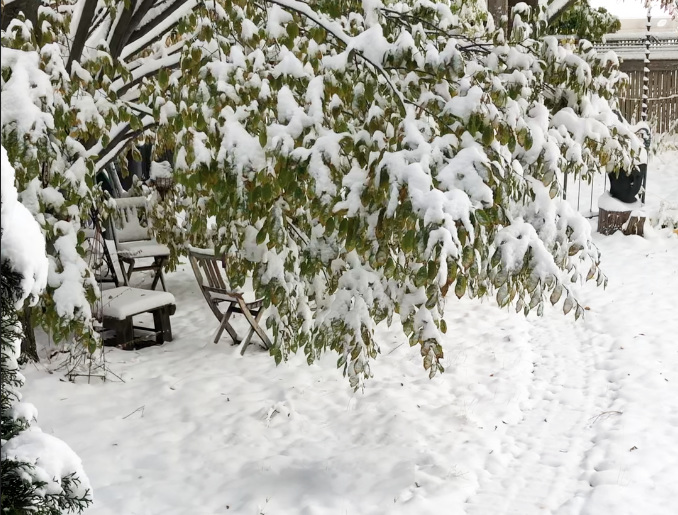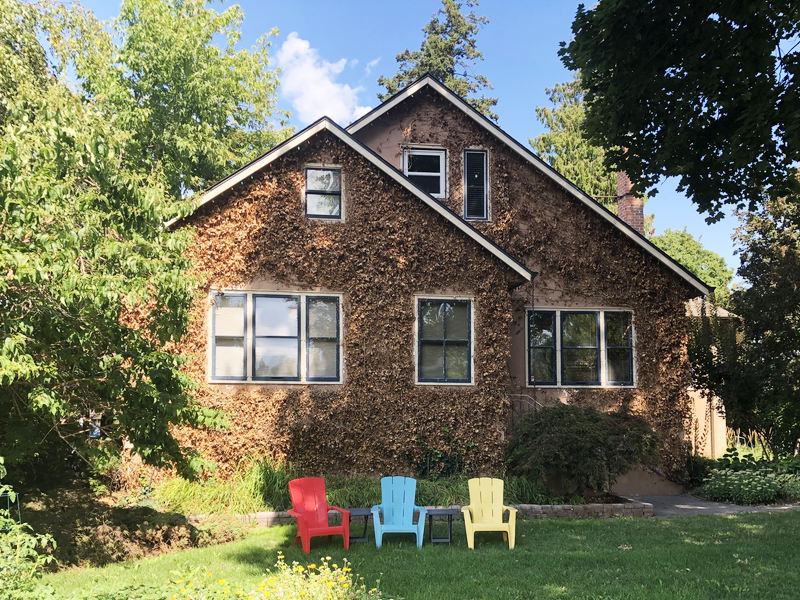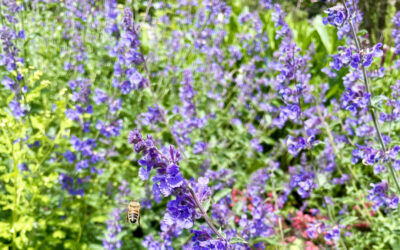GARDENING WITH NATURE
Article by Sigrie KendrickExtreme weather taking its toll on gardens
It’s official, the world recorded the hottest month ever in July, 2023, and last winter the Okanagan Valley suffered under extreme cold—with both a sudden cold snap in fall, and deep cold over several days later in winter. Both extreme heat and cold can cause damage to plants. High temperatures are not just hard on people and pets. They’re also tough on plants, even the plants the Okanagan Xeriscape Association recommends as appropriate for our semi-arid climate with its hot summer weather. Many gardeners are familiar with the basic steps to ensure their plants can survive when the temperature is scorching, such as watering deeply but infrequently and applying a layer of organic mulch to conserve soil moisture. Many may not be as familiar with what to avoid doing to their plants in times of extreme heat.
For instance, do not prune your plants in the heat.
Periods of intense heat are stressful for your plants, and pruning, especially thinning, will only serve to
increase this stress.
Removing leaf matter increases the effects of heat on the remaining vegetation, decreasing the humidity
and therefore forcing the remaining leaves to transpire more to cool the plant.
This often has disastrous results.
Another no-no in periods of extreme heat is fertilizing your plants.
Try to make sure your garden has the nutrients necessary for plant health prior to any spike in
temperature.
Adding fertilizer is almost akin to adding salt to your soil as fertilizer essentially makes it harder for your
plants to access the water in the soil. High concentrations of nutrients actually reverse osmosis, the process by which a plant is able to absorb water from the soil. The osmotic pressure is reversed so that the pressure outside the roots becomes greater than inside, making plants unable to access moisture from the soil and they actually lose water back into the surrounding ground.

Planting in the heat of summer is not ideal
Out of necessity, the landscape industry must continue to plant throughout the hottest summer weather but this is far from an ideal situation.
If at all possible delay your planting to the coolness of shorter days in late summer when the ambient air
temperature has decreased but the warm soil necessary for strong root establishment exists.
If you must plant in high heat, at least offer supplemental shade for new plantings by using shade cloth or, in a pinch, an old white sheet.
This shade is even more vital if you are planting in an area of ‘high albedo’. High albedo environments occur where there is a great deal of reflection such as found in a rock garden. This reflective sunlight will damage young plants that can not transpire enough in the high heat to cool their leaves and almost immediately begin exhibiting heat stress.
Unusual snowfall in early November 2022 landed on trees whos leaves had not had time to drop yet
At the other end of the spectrum, severe winter weather caused considerable havoc in Okanagan gardens, as well as in commercial orchards and vineyards.
The weather we have experienced over the last two years has had severe repercussions for our trees, shrubs, perennials, vines, and ornamental grasses.
In the Okanagan Xeriscape Association’s demonstration garden, we saw the complete loss of several Lavenders and Penstemon and extensive injury to several of our trees from the 2022/2023 winter. The Parrotia persica, the Robinia pseudoacacia ‘Twisty Baby’ and the Koelreuteria all have suffered winter damage, and the latter has had to be removed. It’s a heart-breaking loss.
I have heard other Master Gardeners around the valley sharing similar stories of witnessing first-hand deaths of these plants as well as Buddleia, Hybiscus syriacus and various ornamental grasses.
I know that the long warm fall followed by the extreme and abrupt cold experienced in the beginning of November was to blame for much of the damage, similar to your forgotten frozen water bottle exploding, but I wanted to know more. It was hard to ignore that many of our trees held their browned leaves through the winter, never having the chance to drop them as they normally would, with last fall’s sudden lurch from summer into winter.

I consulted with plant pathologist Robert Hogue of Pegasus Horticultural to gain a better understanding of the physiological process which had wreaked such havoc.
Robert explained that it all actually began with the Heat Dome of 2021 when plant tissue was damaged by the extreme heat, registering into the mid-40s.
Like people, plants go into a low-energy state in extreme heat. In survival mode plants do not process as much carbon dioxide, leading to less carbohydrates moving into the roots. This lack of carbon dioxide means the roots receive less sugars which compromises the ability of the roots to absorb the necessary water and nutrients from the soil.
This in turn leads to root death and with the death of large woody roots comes the death of the organism as a whole. This root death also occurred last fall with the abrupt arrival of winter when the roots were still actively growing.
As Robert explained, ‘The abrupt cessation of metabolic activity in the above-ground plant parts meant there was not enough nutrient flow to the roots to complete the suberization process’.
Suberization is the process by which the root walls harden off into corky tissue similar to a callus over a wound. These weakened feeder roots act as an entry for many root pathogens such as Fusarium, Pythium, and Verticillium.
The damage can be immediate, as seen this spring when the plant abruptly died after a seemingly normal leaf-out; but in other cases there will be a slow but inevitable death.
Robert has done extensive research on the hardiness of plant life in the valley and has come to the conclusion that we simply can not rely on traditional plant hardiness ratings in our changing climate.




0 Comments